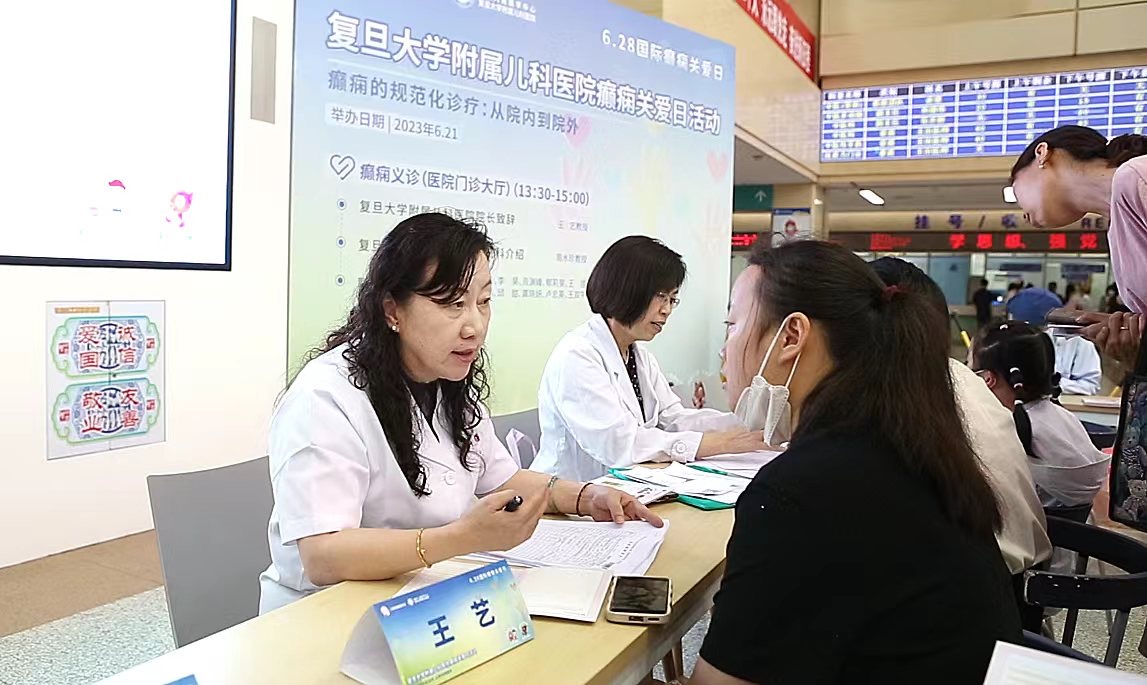Nearly two-thirds have not received standardized and reasonable treatment, and at least 9 million epilepsy patients in China have been diagnosed and treated | epilepsy | China
June 28th this year is the 17th International Epilepsy Care Day, and the China Anti Epilepsy Association has designated the promotional theme of this year's Day as "Standardized Diagnosis and Treatment of Epilepsy: From Within Hospital to Outside Hospital". This morning, the "International Epilepsy Care Day Main Venue Event" was jointly organized by the China Anti Epilepsy Association and the Shanghai Anti Epilepsy Association, and co organized by the Pediatric Hospital affiliated with Fudan University, Huashan Hospital affiliated with Fudan University, and Zhongshan Hospital affiliated with Fudan University. It was reported that there are at least 9 million epilepsy patients in China, and nearly two-thirds of them have not received standardized and reasonable treatment. Diagnosis and treatment from inside to outside the hospital has become the key to effectively improve epilepsy diagnosis and treatment capabilities and improve the quality of life of patients.
Epilepsy is the most common chronic neurological disease, with a long course that involves the entire life cycle and can occur from newborns to the elderly; The symptoms of epilepsy are diverse and the causes are complex. Common causes include hereditary epilepsy, developmental abnormalities of the brain, stroke, traumatic brain injury, encephalitis, brain tumors, autism, senile dementia, Parkinson's disease, etc. Epilepsy is often a critical and life-threatening condition, with seizure related diseases accounting for 1/4 of emergency visits; The treatment of epilepsy is relatively difficult and requires the use of anti epileptic drugs, surgery, neuromodulation, ketogenic diet, immunotherapy, or targeted drug therapy. One third of the cases are intractable epilepsy, accompanied by various neurological and psychiatric comorbidities, requiring multidisciplinary joint diagnosis, treatment, and management.
The World Health Organization has listed epilepsy as a key neurological and psychiatric disease for prevention and treatment. The World Health Organization proposed in the "2022-2031 Cross sectoral Global Action Plan for Epilepsy and Other Neurological Diseases" that member states should strengthen the prevention, treatment, and care of epilepsy as much as possible, increase access to care and treatment for patients with neurological diseases, including epilepsy, prevent new cases, and promote brain health and development throughout life. This strategy provides important support for promoting and strengthening social services and innovative models related to epilepsy at a macro level.
With the transformation of modern medical models and the innovation of chronic disease management models, the concept of standardized diagnosis and treatment for epilepsy has also extended from traditional in hospital diagnosis and treatment to the whole disease process standardization around "pre diagnosis, during diagnosis, and after diagnosis". Providing standardized diagnosis and treatment for epilepsy patients throughout the entire disease process both inside and outside the hospital has become the latest management goal. For example, how to provide correct first aid for epileptic seizures? What kind of medical institution and epilepsy center should I choose? How to conduct standardized and convenient remote follow-up, medication prescription, and follow-up? How to achieve efficient and orderly consultation and referral? The long-term management of epilepsy and chronic diseases in the community is also an important and standardized aspect that must be considered. This requires both hospitals and doctors, as well as the joint efforts of all sectors of society, in order to enable epilepsy patients to receive maximum assistance, control disease seizures, improve quality of life, and return to the normal track of life.
The standardized diagnosis and treatment of epilepsy patients has always been a basic requirement for disease diagnosis and treatment, and it is also a key focus of attention and scientific education for the whole society. Improving patient compliance, promoting the sinking of high-quality medical resources, promoting accessibility of medical services, reducing disease burden, and supporting the Healthy China strategy, the China Anti Epilepsy Association, as an industry organization in the field of epilepsy, has been striving, calling for, and taking action.

After 6 years of effort, China has established a standardized three-level epilepsy center network system and further strengthened the standardized construction of epilepsy centers. The China Anti Epilepsy Association has promoted the establishment and evaluation of 294 epilepsy centers nationwide, covering 31 provinces, municipalities, and autonomous regions. The standardized epilepsy center, composed of a multidisciplinary team specializing in epilepsy diagnosis and treatment, including neurology, pediatrics, neurosurgery, neurophysiology, neuroimaging, neuropharmacology, neuronursing, and neuropathology, will provide important guarantees for the standardized construction and high-quality medical treatment of epilepsy in China. It has gradually formed a Chinese epilepsy diagnosis and treatment model and plan, and is making unremitting efforts to promote the rapid development of epilepsy in China.
On the occasion of the 17th International Epilepsy Care Day, the China Anti Epilepsy Association specially promotes the concept of "standardized diagnosis and treatment of epilepsy, both in and out of hospital" to the public, patients, and their families. It encourages patients and their families to actively participate in disease management, and looks forward to all relevant parties in society taking active action to make their own efforts to standardize the diagnosis and treatment of epilepsy.
Mr. Lang Lang, the Children's Health Ambassador and internationally renowned pianist at the Affiliated Pediatric Hospital of Fudan University, was invited to participate in the event online, encouraging patients to build confidence, overcome diseases, and return to normal life. At the event, attending experts connected with epilepsy diagnosis and treatment aid bases in Ningxia and Yunnan to deeply understand and explore new developments in epilepsy treatment and remote assistance in remote areas of China.
The Epilepsy Center of Huashan Hospital affiliated with Fudan University, in collaboration with Shanghai Academy of Drama, has specially arranged a science popularization single act play "99th Square Fate" for epilepsy patients. It is scheduled to be publicly performed at this event, promoting the elimination of epilepsy discrimination, popularizing knowledge on emergency treatment for epilepsy, and the actors' wonderful performances and the love behind the story deeply moved the audience and the applause echoed for a long time.




